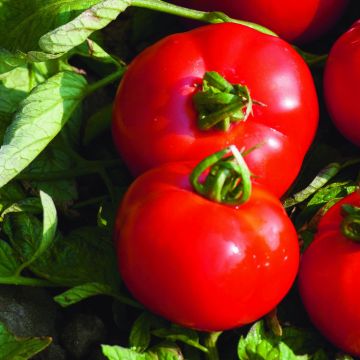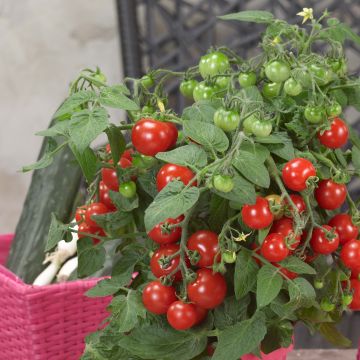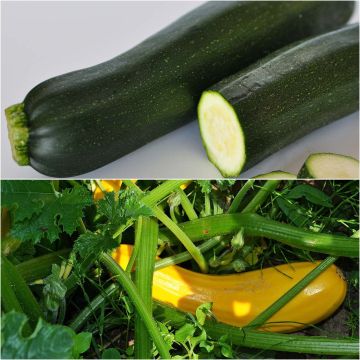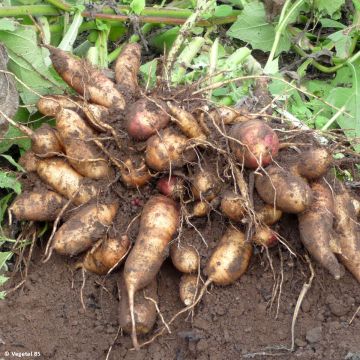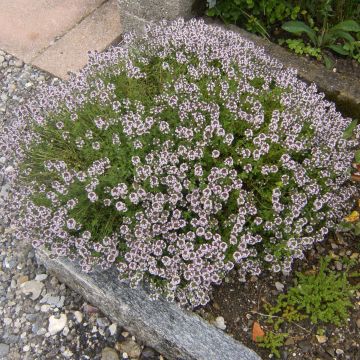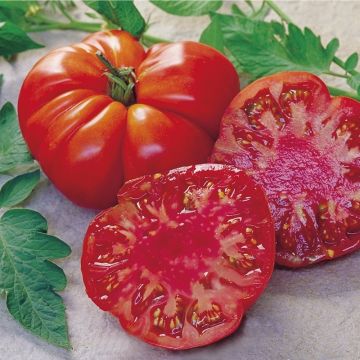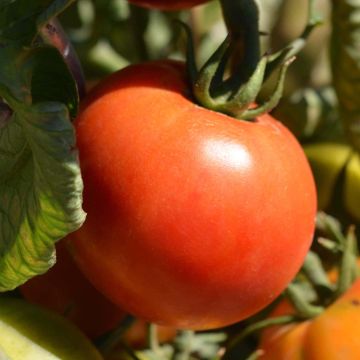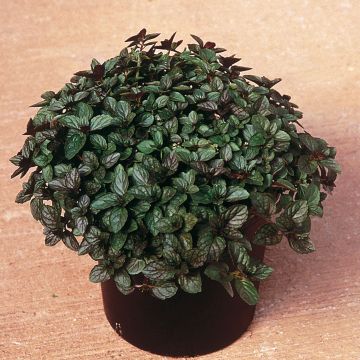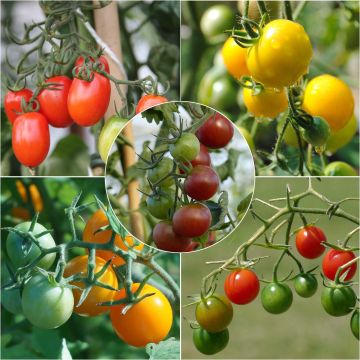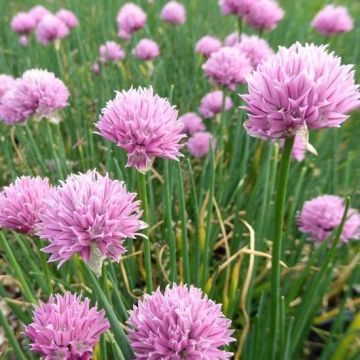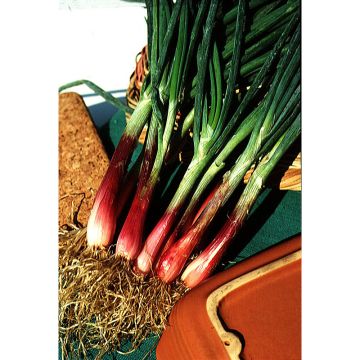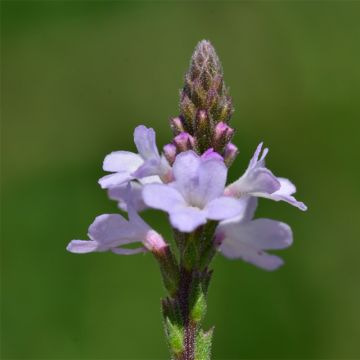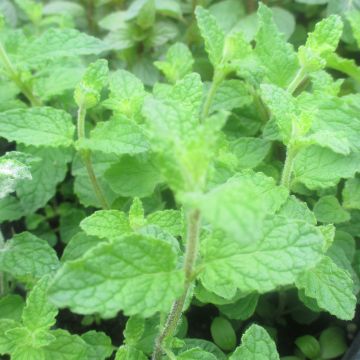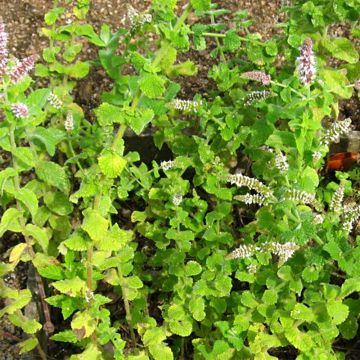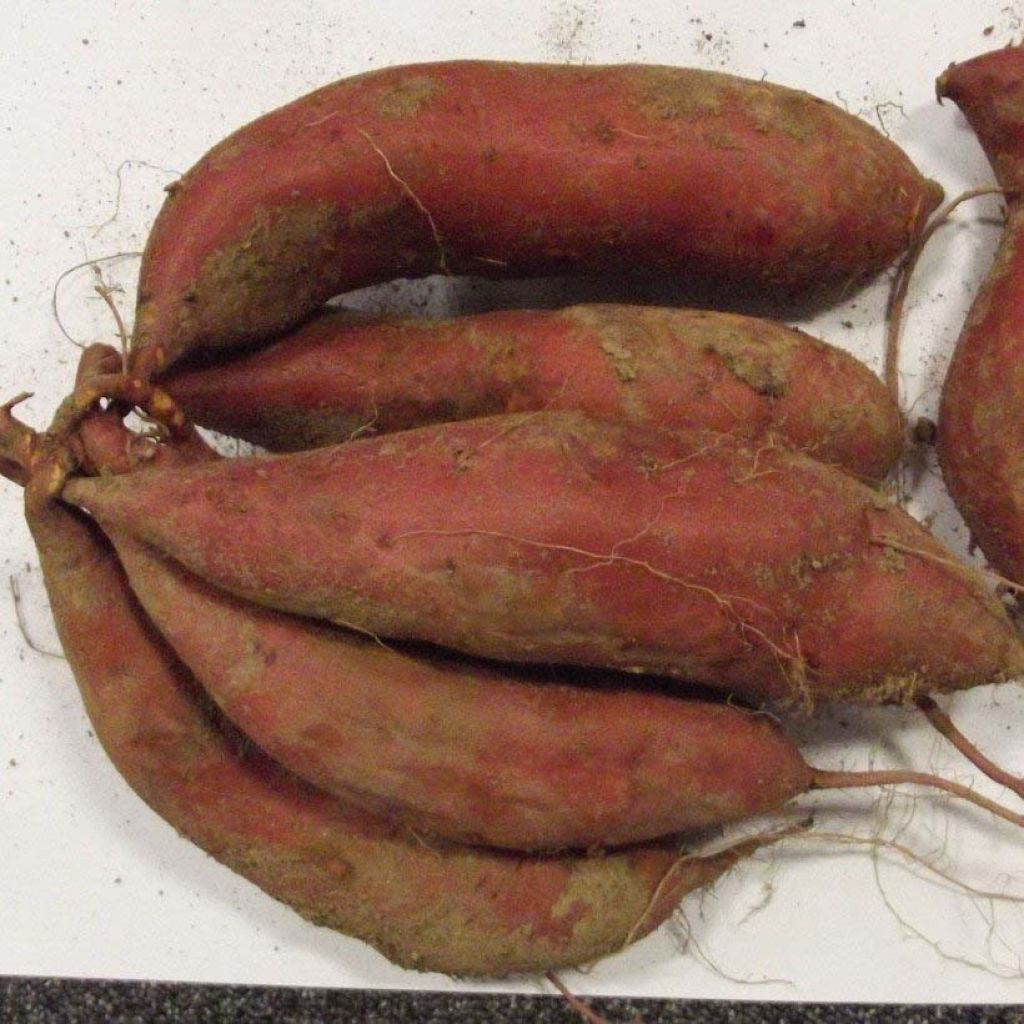

Patate douce Beauregard en plants BIO - Ipomoea batatas
Sweet Potato Beauregard - Ipomoea batatas
Ipomoea batatas Beauregard
Sweet Potato, Yam
Very fast delivery and mini plant well packaged with plenty of roots. Thank you Promesse de Fleurs.
Jeanette, 29/04/2021
This item cannot be shipped to the selected country
Delivery charge from €5.90
More information
Schedule delivery date,
and select date in basket
This plant carries a 6 months recovery warranty
More information
We guarantee the quality of our plants for a full growing cycle, and will replace at our expense any plant that fails to recover under normal climatic and planting conditions.
From €5.90 for pickup delivery and €6.90 for home delivery
Express home delivery from €8.90.
Description
The organic Beauregard sweet potato is a variety that produces tubers with a pinkish skin and orange flesh of excellent taste. It has an elongated shape and a slightly sweet flavor that is very pleasant in the mouth. This root vegetable is cooked like a potato. Young sweet potatoes are planted from April to June, after the last frost, in open ground, under cover or in pots, depending on the climate. Harvesting takes place from September to November.
The young plants come from organic farming and have received the AB certification.
The sweet potato, known as Ipomoea batatas in Latin, is a perennial plant with swollen tubers native to South America. Standing only about twenty centimeters tall, it can spread several meters wide thanks to its long creeping stems. Belonging to the family of Convolvulaceae and the genus of Ipomoea, it has very decorative foliage. Some varieties have been selected for their foliage and can be grown in gardens as ornamental plants, such as the Illusion Midnight Lace or the Sweet Heart Purple Ipomoea.
Vegetable varieties produce large elongated tubers with flesh colors ranging from white, yellow, orange, to purple. This tropical plant needs warmth and water to thrive. It can be planted in open ground in regions with hot summers, with abundant watering in summer. In cooler regions, opt for cultivation under cover or in pots.
In terms of cooking, sweet potatoes can be prepared like regular potatoes (mashed, gratin, soups, fries, chips, etc.). Their sweet taste also allows them to be used in desserts such as cakes, pies, or jams. The edible leaves can be consumed like spinach. Sweet potatoes are rich in beta-carotene, vitamin B6, and minerals (copper and manganese).
Harvesting: sweet potatoes are short-day plants. Tuber formation begins in September-October when the foliage turns yellow. Just before harvesting, cut the foliage. Gently dig out the tubers with a garden fork, taking care not to damage them. Let them dry in the sun for a few hours. Harvesting should be completed before the first frost.
Storage: sweet potatoes can be stored like regular potatoes. Store them in a cool, dry place away from light.
Gardener's tip: Although the plant provides cover, mulch the soil to keep it moist and reduce weed growth, especially at the beginning of the cultivation.
Report an error about the product description
Harvest
Plant habit
Foliage
Other Vegetable plants A to Z
Planting and care
The cultivation of the sweet potato requires temperatures averaging above 20°C, ideally around 25°C. The sweet potato can be planted in open ground if summers are warm, with careful monitoring of watering. For cooler regions, prefer cultivation under cover (heated if necessary) or in pots.
First, allow the young plants to grow by transplanting them into crates or buckets measuring 8 to 13 cm (3 to 5in) in diameter, filled with compost. Place them in a warm and bright location. Water regularly.
In open ground and under cover:
Transplanting in open ground in sunny regions takes place around mid-May, when the risk of frost has passed and the soil is sufficiently warmed.
The sweet potato thrives in most types of soil, with a preference for loose, slightly sandy, well-drained, and fertile soil. Choose a highly sunny spot. Prepare a large space as the sweet potato will develop long creeping stems. Add well-rotted compost in the previous autumn. Loosen the soil deeply. Space the rows 90 cm (35in) apart. Mound up the soil along the entire row to form a 15 cm (6in) high ridge. Flatten the top and plant the obtained plants every 30 cm (12in). Hill up the plants when the stems are well developed. Water very regularly. In our regions, the sweet potato is cultivated as an annual.
In pots: transplant the plants into pots with a diameter of at least 30 cm (12in), filled with a mixture of compost and garden soil. Place the pots in full sun. Water regularly. Hill up the plants by adding compost. This will result in a beautiful plant and a small harvest will be possible in the same autumn, although it will be low.
Cultivation
Care
Intended location
-
, onOrder confirmed
Reply from on Promesse de fleurs
Vegetable plants
Haven't found what you were looking for?
Hardiness is the lowest winter temperature a plant can endure without suffering serious damage or even dying. However, hardiness is affected by location (a sheltered area, such as a patio), protection (winter cover) and soil type (hardiness is improved by well-drained soil).

Photo Sharing Terms & Conditions
In order to encourage gardeners to interact and share their experiences, Promesse de fleurs offers various media enabling content to be uploaded onto its Site - in particular via the ‘Photo sharing’ module.
The User agrees to refrain from:
- Posting any content that is illegal, prejudicial, insulting, racist, inciteful to hatred, revisionist, contrary to public decency, that infringes on privacy or on the privacy rights of third parties, in particular the publicity rights of persons and goods, intellectual property rights, or the right to privacy.
- Submitting content on behalf of a third party;
- Impersonate the identity of a third party and/or publish any personal information about a third party;
In general, the User undertakes to refrain from any unethical behaviour.
All Content (in particular text, comments, files, images, photos, videos, creative works, etc.), which may be subject to property or intellectual property rights, image or other private rights, shall remain the property of the User, subject to the limited rights granted by the terms of the licence granted by Promesse de fleurs as stated below. Users are at liberty to publish or not to publish such Content on the Site, notably via the ‘Photo Sharing’ facility, and accept that this Content shall be made public and freely accessible, notably on the Internet.
Users further acknowledge, undertake to have ,and guarantee that they hold all necessary rights and permissions to publish such material on the Site, in particular with regard to the legislation in force pertaining to any privacy, property, intellectual property, image, or contractual rights, or rights of any other nature. By publishing such Content on the Site, Users acknowledge accepting full liability as publishers of the Content within the meaning of the law, and grant Promesse de fleurs, free of charge, an inclusive, worldwide licence for the said Content for the entire duration of its publication, including all reproduction, representation, up/downloading, displaying, performing, transmission, and storage rights.
Users also grant permission for their name to be linked to the Content and accept that this link may not always be made available.
By engaging in posting material, Users consent to their Content becoming automatically accessible on the Internet, in particular on other sites and/or blogs and/or web pages of the Promesse de fleurs site, including in particular social pages and the Promesse de fleurs catalogue.
Users may secure the removal of entrusted content free of charge by issuing a simple request via our contact form.
The flowering period indicated on our website applies to countries and regions located in USDA zone 8 (France, the United Kingdom, Ireland, the Netherlands, etc.)
It will vary according to where you live:
- In zones 9 to 10 (Italy, Spain, Greece, etc.), flowering will occur about 2 to 4 weeks earlier.
- In zones 6 to 7 (Germany, Poland, Slovenia, and lower mountainous regions), flowering will be delayed by 2 to 3 weeks.
- In zone 5 (Central Europe, Scandinavia), blooming will be delayed by 3 to 5 weeks.
In temperate climates, pruning of spring-flowering shrubs (forsythia, spireas, etc.) should be done just after flowering.
Pruning of summer-flowering shrubs (Indian Lilac, Perovskia, etc.) can be done in winter or spring.
In cold regions as well as with frost-sensitive plants, avoid pruning too early when severe frosts may still occur.
The planting period indicated on our website applies to countries and regions located in USDA zone 8 (France, United Kingdom, Ireland, Netherlands).
It will vary according to where you live:
- In Mediterranean zones (Marseille, Madrid, Milan, etc.), autumn and winter are the best planting periods.
- In continental zones (Strasbourg, Munich, Vienna, etc.), delay planting by 2 to 3 weeks in spring and bring it forward by 2 to 4 weeks in autumn.
- In mountainous regions (the Alps, Pyrenees, Carpathians, etc.), it is best to plant in late spring (May-June) or late summer (August-September).
The harvesting period indicated on our website applies to countries and regions in USDA zone 8 (France, England, Ireland, the Netherlands).
In colder areas (Scandinavia, Poland, Austria...) fruit and vegetable harvests are likely to be delayed by 3-4 weeks.
In warmer areas (Italy, Spain, Greece, etc.), harvesting will probably take place earlier, depending on weather conditions.
The sowing periods indicated on our website apply to countries and regions within USDA Zone 8 (France, UK, Ireland, Netherlands).
In colder areas (Scandinavia, Poland, Austria...), delay any outdoor sowing by 3-4 weeks, or sow under glass.
In warmer climes (Italy, Spain, Greece, etc.), bring outdoor sowing forward by a few weeks.

































